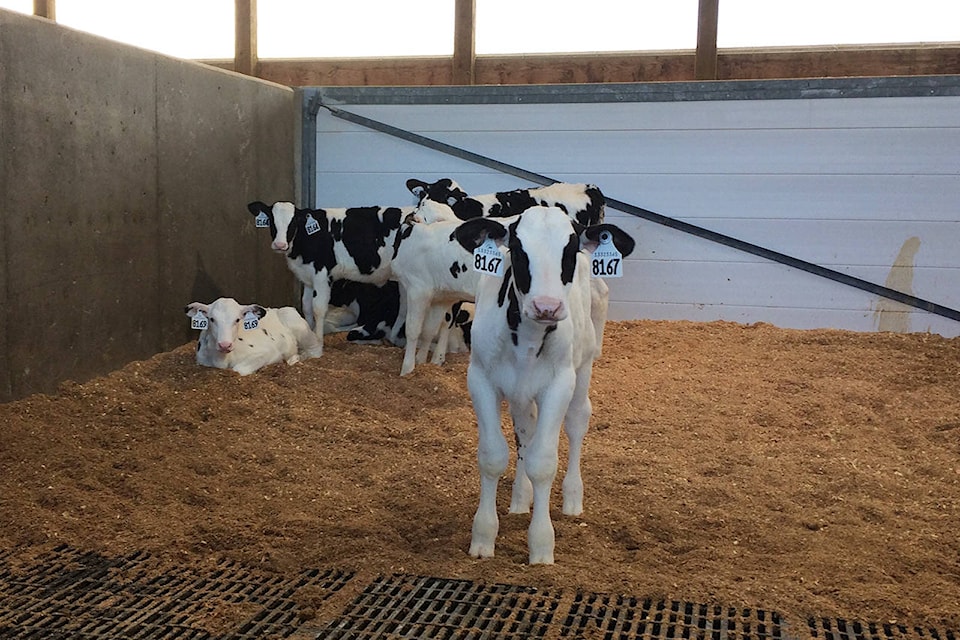UBC Dairy has signed a new lease with the federal government, one that will see them paying market rent for their property but hopefully provide enough long-term stability for the program to modernize its facilities.
According to farm manager Nelson Dinn, UBC Dairy recently signed a five-year lease with Agriculture and Agri-food Canada for the university’s land at the Agassiz Research and Development Centre. The university hasn’t negotiated a lease with the federal government since it moved to Agassiz in 1997, when it has signed a 10-year lease with an option for a 10-year renewal.
The new lease, signed a few months ago, has a five-year term, with an option for a five-year renewal.
Although he didn’t say exactly how much more the new lease would see the dairy program paying, Dinn said it was “a significant change” than what it had in its previous lease. The dairy will be paying what Dinn described as “market rent” for its facilities that will be re-evaluated throughout the lease period.
“Every dollar that we spend on rent is one less dollar that we have to contribute towards research,” he said. “So obviously this has an impact on what we can do.”
SEE ALSO: UBC students’ research connects cattle’s physical activity with fertility
The lease also gives the dairy program less exclusive land than it had in the past, as portions of the dairy centre’s crop land were transferred back to the federal government. This will give the Agassiz Research and Development Centre more field space for its crop research, but less space for UBC Dairy to spread its manure and grow crops for its herd.
Dinn is hopeful, however, that a side agreement with the federal scientists and UBC Dairy could see some collaboration between the two programs, and potentially a reduction in the university’s rent.
“We’re not really sure what that looks like, because on the federal side there’s no animal people here or coming here. So we look at collaboration in the broader sense. And if that comes to fruition, that will be used as a mechanism to keep the rental rate down below market rate,” he said.
“We’re hoping, but we don’t really know what it looks like yet, because those discussions haven’t taken place.”
Despite challenges in the new lease, it does give UBC Dairy some stability in regards to the next decade of programming.
“We are grateful to the federal government for providing us some stability for the next decade,” Dinn said.
“Our next step, and this was kind of one of our obligations we put forward during out lease negotiations, is once we get things finalized, our plan is to go ahead and update the infrastructure — with the goal of becoming a technology hub for dairy cattle research,” he continued.
SEE ALSO: UBC study shows dairy cows prefer pasture, reap health benefits from outdoor access
One of the first ways the program plans to make this happen is through the installation of robotic milkers in the lactating cow barn.
Currently, about 20 per cent of B.C. dairy farmers use robotic milkers on their farm, and UBC Dairy plans to become one of the first research institutions to solely use robotic milking.
“We want to stay at the forefront of dairy cattle research,” Dinn said. “To ensure that we are at the forefront, we must invest in modern infrastructure, and this is the starting point for us.”
“The way we’re planning on setting things up, we will be unique in terms of research facilities, anywhere,” he continued.
UBC Dairy is currently in the planning stages for the robotic milking installation, but Dinn said he hopes to have it up and running within 2021.
“We’re going all in. It will be 100 per cent switched to robotics. So it’s a very exciting time,” he said. “In addition to re-positioning ourselves at the lead of dairy cattle research facilities, it will also open up new research opportunities for the research groups and aid producers in managing facilities with robotics, which is the direction the industry is going as well.”
grace.kennedy@ahobserver.com
Like us on Facebook and follow us on Twitter
